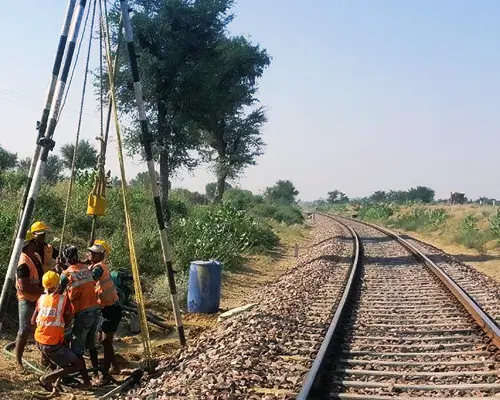
Image Source: Google
Building a dam is a complex and challenging engineering feat that requires careful planning and precise execution. One of the most critical aspects of dam construction is the geotechnical investigation. This process involves studying the soil and rock properties at the dam site to assess their suitability for supporting the structure.
One of the primary reasons why the best dam geotechnical investigation is critical for dams is that the foundation is the most important element of any dam structure. The foundation is the base on which the entire dam rests, and its stability is crucial for the safety and longevity of the dam.
A thorough geotechnical investigation helps engineers understand the characteristics of the soil and rock layers beneath the dam site, including their strength, composition, and stability. This information is essential for designing the foundation of the dam to ensure that it can safely support the weight of the structure and withstand the forces exerted on it.
Geotechnical investigation also helps engineers identify any potential hazards or risks at the dam site that could affect the stability of the structure. For example, the presence of soft or loose soil layers, seismic activity, or groundwater conditions could pose a threat to the dam's foundation.
By conducting a comprehensive geotechnical investigation, engineers can assess these risks and develop appropriate measures to mitigate them. This may involve modifying the dam design, improving the foundation, or implementing additional safety measures to ensure the dam's stability in all conditions.
Furthermore, geotechnical investigation plays a crucial role in determining the most suitable construction methods for building the dam. The information gathered from the investigation helps engineers determine the best techniques for excavating the foundation, placing the dam materials, and compacting the soil.
By understanding the soil and rock properties at the site, engineers can optimize the construction process to ensure the dam is built on a strong and stable foundation. This not only enhances the safety and durability of the dam but also helps minimize construction costs and time by avoiding potential delays or complications.
Another important aspect of geotechnical investigation for dams is the assessment of potential environmental impacts. Dams can have significant environmental consequences, such as altering water flow, affecting habitats, and disrupting ecosystems. By conducting a thorough geotechnical investigation, engineers can evaluate the potential environmental impacts of the dam construction and implement measures to minimize these effects.
This may involve selecting alternative dam locations, implementing erosion control measures, or restoring habitats affected by the construction process. By considering the environmental implications of the dam project during the geotechnical investigation phase, engineers can ensure that the structure is built in a sustainable and environmentally responsible manner.
In conclusion, geotechnical investigation is a critical step in the construction of dams. It provides essential information about the soil and rock properties at the dam site, helps identify potential hazards and risks, determines the most suitable construction methods, and assesses the environmental impacts of the project.
